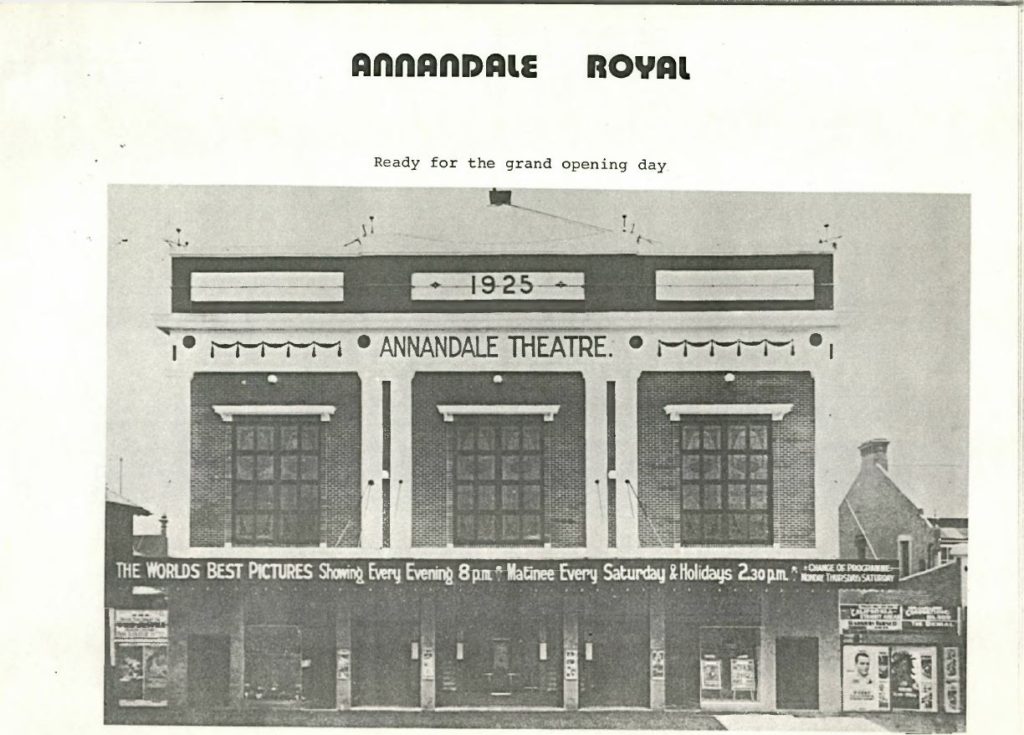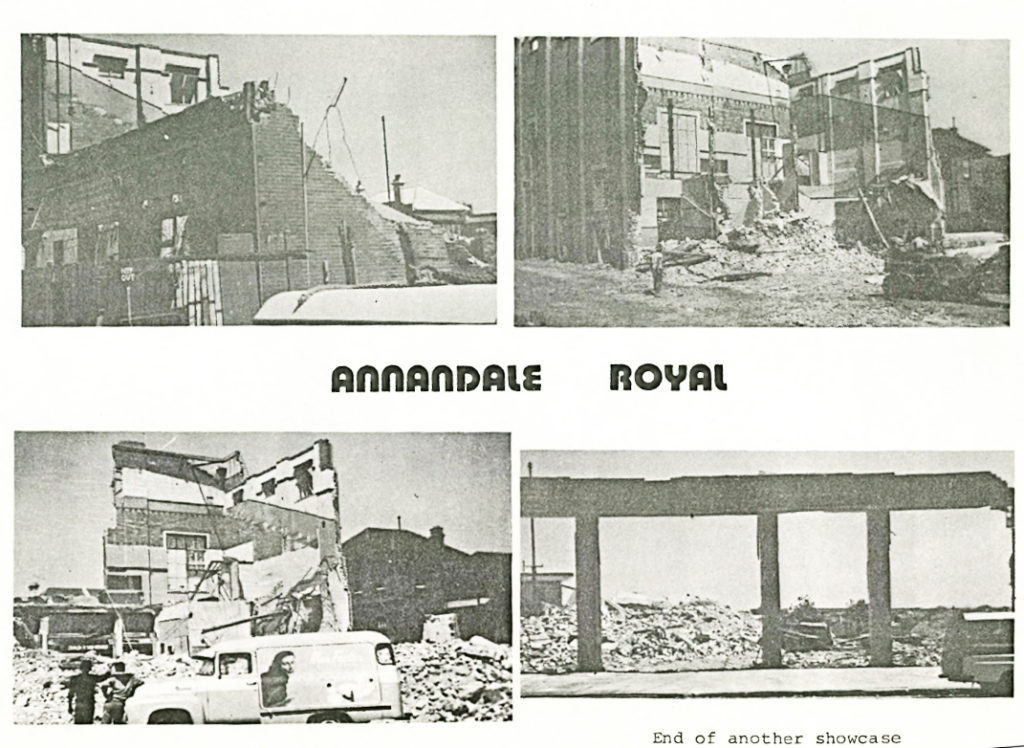
Situated on Johnson Street the Royal opened in 1925 with seating for 1,333
patrons. This theatre screened revival programmes for a number of years.
When local residents heard that the theatre was to be sold, they immediately
organised a large petition to try to save same from closure. Unfortunately
this was not successful and the Royal closed in August 1960.
Demolition followed and a service station now occupies the site.
 Memoirs
Memoirs
In 1912 the Annandale Theatre opened in Johnston Street, in Johnston Street, near Booth Street. It was much more convenient for North Annandale folk, and Waddington’s lost its appeal. Built by Messrs Schell & Tome, the Annandale Theatre was open-air, with timber seats, iron sheets and timber front and sides. The picture screen faced west and silent films were accompanied by a pianist. The new theatre was built around the old building.
My earliest recollection of the Annandale Theatre dates back to I remember the name of Mr Schell but knew the Tome family. Mr Tome conducted the business, Mrs Tome attended to the ticket box, son Car 1 supervised, and daughter Netta played the piano. Mr. Pickard collected the tickets and also supervised.
A red concrete floor and mirror-walls formed an entrance foyer where easel display-boards advertised coming films. In the foyer’s centre ‘and above a mirror-walled ticket box, were large-framed coloured photographs of Norma Talmadge, Constance Bennett, Gloria Swanson, John Barrymore, Charles Chaplin and Mildred Harris. Strong wire-meshed partitions protected the foyer after closing times and informed patrons of coming films. Swinging double timber gates, manproofed with barbed wire, surmounted with hoardings advertising the current week’s programmes. There was a timber lockup confectionery shop inside the double gates on the Booth Street boundary.
The screen was on Johnston Street boundary in a galvanised-iron building. The sliding galvanisediron panels were kept open except in very cold weather. Unexpected rain
created a panic, sometimes the manually operated wire ropes jammed, the audience cheered and urged the harrassed wire pullers to hasten.
On each side of the entrance foyer, asphalted space surrounds led to two wide entrance doors and gave access to two-thirds of the theatre’s asphalted floors and aisles. The rear of “up-the-back” of the theatre had flooring boards. Access aisles to “up-the-back” were provided by meshed wire partitions and enclosed the “cushion seats” and “chairs”. Admission price was threepence “up-the-back” to wooden benches with back rests. The access aisles were complemented with two smaller aisles and divided the 16 seating into three blocks. The graduated flooring provided tiered seating. The operator’s box was at the rear of the centre block, and its side door opened for coolness. The matinee children would watch ·the operator at work but it was noisy and we tired of that activity. The operator’s patience was magnificent: he ignored us.Admission price was sixpence to the front benches with leather upholstery and back rests. These were divided into two blocks by a middle and two side aisles and referred to as the “pushion” seats by the small children. Three silken cords across these aisles divided the cushion seats from the “chairs”, which cost a shilling, and an extra charge ofsixpence for a reserved seat.

For the full story follow this link to the Leichhardt Historical Journal No:5
Reference: Leichhardt Historical Journal No:5 June 1975
Author: Margaret Quinn
Image 1: A Pictorial History of Sydney’s Suburban Cinemas Barry Sharp Volume 1 pg. 121
Image 2 A Pictorial History of Sydney’s Suburban Cinemas Barry Sharp Volume 1 pg. 123
